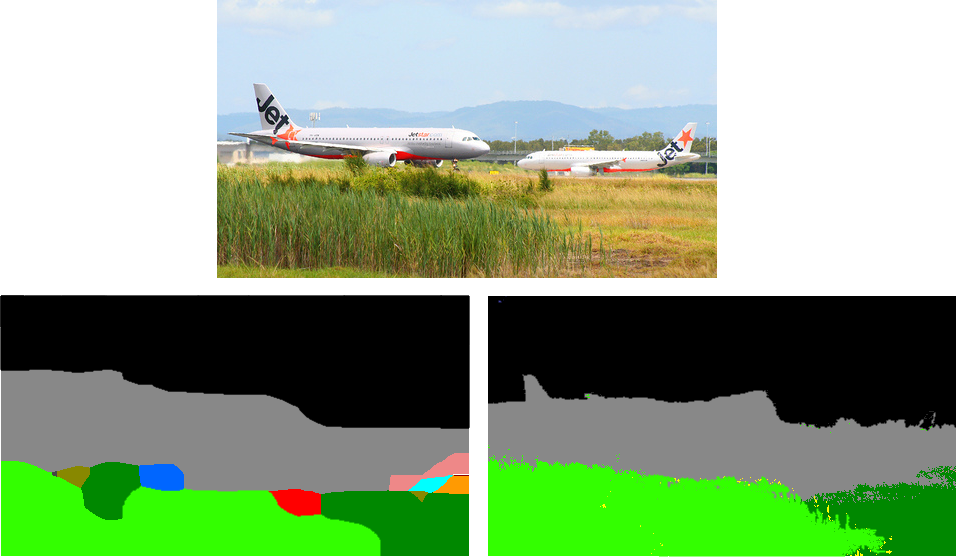CRF-as-RNN Layer for Pytorch
This repository contains an implementation of the CRF-as-RNN method described here. Please cite their work if you use this in your own code. I am not affiliated with their group, this is just a side-project.
The pytorch module relies on two Functions: one to build the hashtable representing a permutohedral lattice and another to perform the high-dimensional Gaussian filtering required by approximate CRF inference.
For inplace use / testing:
python setup.py build_ext --inplace
Or, to install the packages (permutohedral, crfrnn):
python setup.py install
The Pytorch module takes two inputs for the forward pass: a probability map (typically the output of a softmax layer), and a reference image (typically the image being segmented/densely-classified). Optional additional parameters may be provided to the module on construction:
sxy_bf: spatial standard deviation for the bilateral filter.sc_bf: color standard deviation for the bilateral filter.compat_bf: label compatibility weight for the bilateral filter.sxy_spatial: spatial standard deviation for the 2D Gaussian filter.compat_spatial: label compatibility weight for the 2D Gaussian filter.
Note: the default color standard deviation assumes the input is a color image in the range [0, 255]. If you use whitened or otherwise-normalized images, you should change this value.
Here is a simple example:
import torch as th
from crfrnn import CRF
n_categories = 32
class MyCNN(th.nn.Module):
def __init__(self):
super(MyCNN, self).__init__()
self.relu = th.nn.ReLU()
self.conv1 = th.nn.Conv2d(3, 64, 3, 1, 1)
self.conv2 = th.nn.Conv2d(64, 64, 3, 1, 1)
self.final = th.nn.Conv2d(64, n_categories, 3, 1, 1)
self.crf = CRF()
def forward(self, x):
input = x
x = self.relu(self.conv1(x))
x = self.relu(self.conv2(x))
x = th.softmax(self.final(x), dim=1)
x = self.crf(x, input)
return x
img = th.zeros(1, 3, 384, 512, device="cuda:0")
model = MyCNN()
model.to(device="cuda:0")
model(img)The functions used for CRF inference can also be used on their own for things like bilateral filtering. bilateral.py contains a sample implementation.
python bilateral.py input.png output.png 20 0.25


